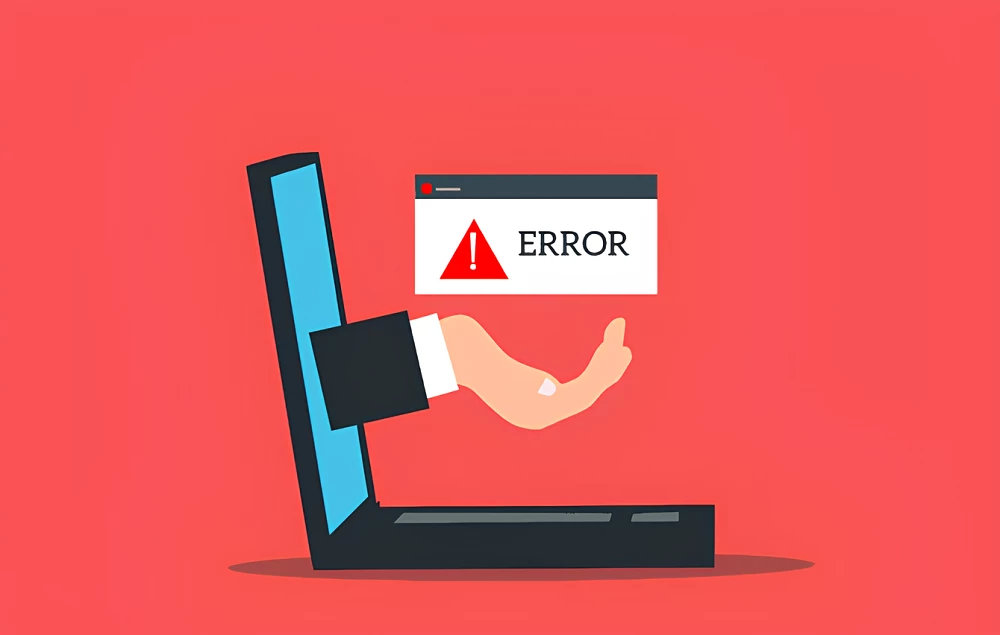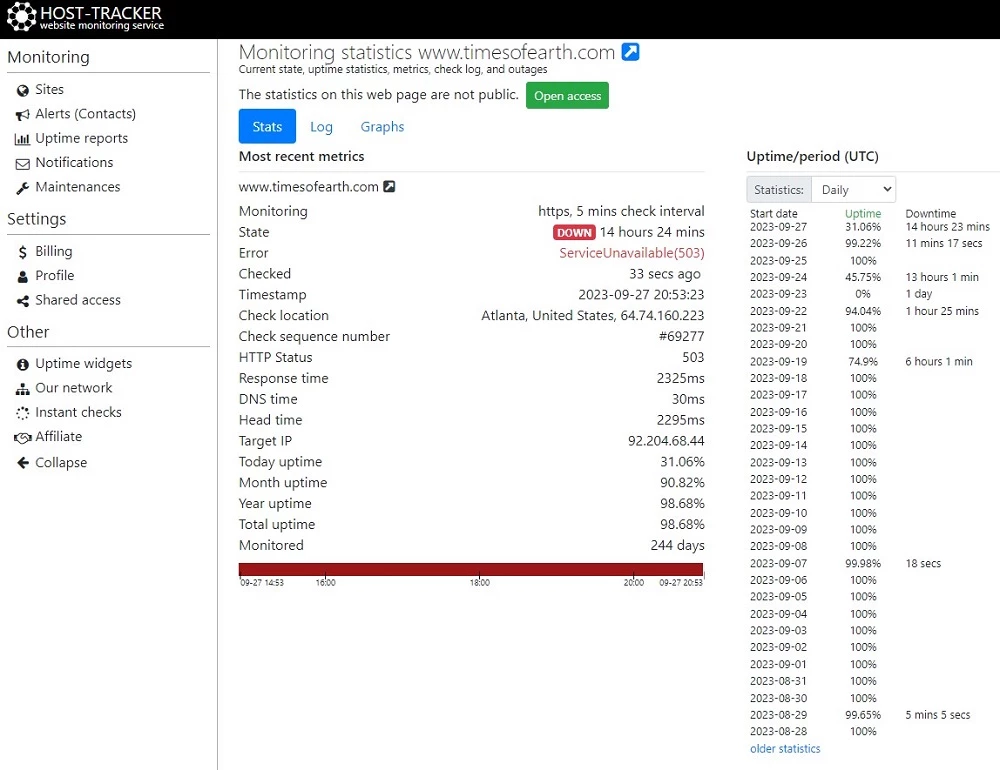
For webmasters, monitoring the uptime of websites is a crucial task. It can be detrimental for a site to be down, affecting visitor numbers, revenue, and the overall user experience. In this article, we’ll explore a range of methodologies webmasters can employ to verify whether a website is down or experiencing accessibility issues.
Manual Checks
The first step is simple: try to access the website. Use different browsers and devices to see if the problem is universal or localized. For instance, if the site is accessible on mobile data but not on a Wi-Fi network, it may not be down; instead, there may be an issue with the specific network.
Online Tools

Several online tools can help verify whether a website is down for everyone or just you. These tools perform checks from various locations around the world, providing a comprehensive view of the website’s availability. Some popular tools include:
A simple tool to check if a site is down
IsItDownRightNow: Offers more detailed insights, including response time and a brief site history.
Google’s Public DNS Cache: Shows whether the website is reachable via Google’s DNS servers.
HostTracker: You can check your website and ping server all time long – hosttracker will allow you to do it either manually or automatically using its vast toolkit.
Check Web Hosting Server Status
Web hosting providers usually offer status pages where they report outages or maintenance work. Consulting this page can quickly clarify whether the host is experiencing issues affecting website availability.
Domain Name System (DNS) Configuration
Incorrect DNS configuration can make a website inaccessible. DNS translates domain names to IP addresses, directing user traffic to the correct server. Webmasters should verify their DNS settings and ensure that the domain is correctly pointing to the server IP address. Tools like nslookup and dig can help verify DNS resolutions.
Server Response Codes
Checking server response codes can reveal the type of issue a website is experiencing. For instance, a 500 Internal Server Error points towards server misconfigurations or faults. Webmasters can use developer tools in browsers or online HTTP status code checkers to analyze server responses.
Inspect SSL Certificate
A faulty SSL certificate can render a site inaccessible. Webmasters must ensure that the SSL certificate is valid, correctly installed, and not expired. SSL Shopper’s SSL Checker is a handy tool for inspecting SSL certificates.
Website Monitoring Services

Monitoring services like HostTracker automatically check website availability at regular intervals and notify webmasters of any downtime. And 24/7 check hosting on host-tracker is indispensable for webmasters managing multiple sites, providing real-time alerts and comprehensive downtime reports.
Analyze Server Logs
Server logs offer insights into server activity and errors. By reviewing the logs, webmasters can identify the causes of downtime, such as server overloads, hardware failures, or misconfigurations, and implement corrective measures.
Content Delivery Network (CDN) Issues
CDNs are used to distribute website content globally, reducing load times and bandwidth usage. However, CDNs can also experience issues, affecting website availability. Webmasters should verify their CDN configuration and check the CDN provider’s status page for reported issues.
Firewall and Security Settings
Firewalls and security plugins can block access to websites. Webmasters should review firewall logs and security settings to ensure legitimate users are not being blocked. If a site is inaccessible from a specific location, it could be due to regional IP blocks.
Contact Your Hosting Provider
If all else fails, reaching out to the hosting provider can help in identifying and resolving the issue. Hosting providers have access to server resources and configurations that are not available to webmasters and can often quickly diagnose and fix problems.
Monitoring & Resolving Downtime: Importance & Implications

Monitoring website uptime is not merely about identifying when a site is down; it’s about resolving the underlying issues efficiently. Downtime can lead to loss of revenue, degrade user experience, and adversely affect search engine rankings. Therefore, if you test website uptime monitoring on host-tracker, it will help in promptly detecting and addressing downtime, mitigating its impacts.
Proactive Measures to Ensure Uptime
While resolving issues is crucial, proactively preventing downtime is equally important. Regular backups, security audits, and optimizing server resources are essential steps in maintaining website availability. Additionally, utilizing monitoring services enables webmasters to react swiftly to unexpected downtime, reducing the duration of unavailability.
Webmasters should routinely check the health and configurations of their websites and server resources, ensuring everything is optimized and secure. Regular updates, patching, and maintaining a robust security posture help in preventing many common issues leading to website downtime.
Conclusion
Ensuring that a website is accessible and operational is pivotal for webmasters. From manual checks to sophisticated monitoring services, various approaches can be used to determine whether a website is down. Understanding the causes and resolving them promptly is critical in maintaining user trust and safeguarding online reputation.
By embracing proactive measures like regular updates, backups, and security checks, webmasters can minimize the risks of downtime and ensure the availability and reliability of their websites. In a world where online presence is indispensable, maintaining website uptime should be a top priority for webmasters, emphasizing swift resolution and ongoing preventive actions.
